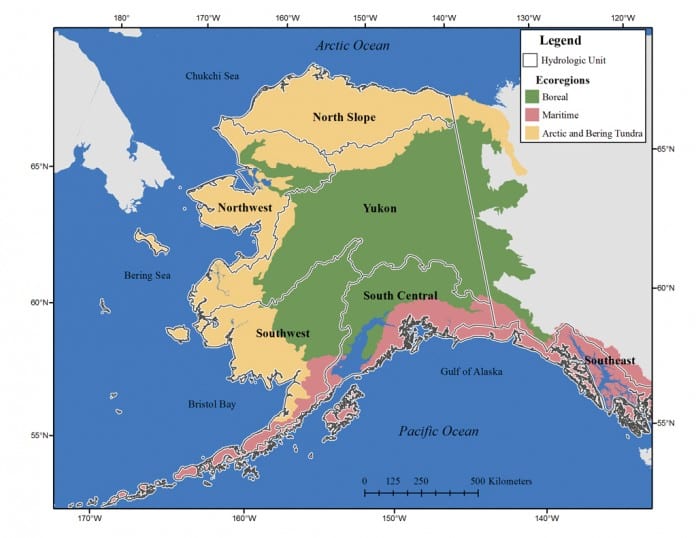
A new report from the U.S. Geological Survey says that while freshwater ecosystems cover only a small area of the land surface in Alaska they transport and emit a significant amount of carbon.
An invited report in the online publication Ecological Applications (http://onlinelibrary.wiley.com/doi/10.1002/eap.1552/full) provides the first ever major aquatic carbon flux assessment for the entire state.
USGS officials said researchers found that the major freshwater carbon fluxes in Alaska were river carbon transport to the coastal ocean and carbon dioxide emissions from water surfaces into the atmosphere. Rivers encounter multiple carbon sources as they meander through the landscape, including carbon released from decomposing vegetation, weathered rocks eroded soils, melting glaciers or thawing permafrost. The quantity and quality of the carbon can impact aquatic food webs in estuaries and coastal oceans.
Permafrost degradation has been linked to higher rates of organic matter delivery to lake bottoms, and the increased rates of greenhouse gasses emissions from lakes, including carbon dioxide and methane, have been documented. While lake methane emission rates were lower than previously published rates for high latitude regions, the study found that total lake gas emissions rates, including both carbon dioxide and methane, were consistently higher than the amount of carbon stored in sediments at the bottom of lakes. This indicates that lakes were net sources of carbon to the atmosphere on an annual time scale.
Many carbon cycle studies focus predominantly on terrestrial carbon fluxes, as plants take up a great deal of carbon dioxide from the atmosphere and store it in their tissues, and soils store vast amounts of carbon from decomposing plant material. This study shows that freshwater fluxes are also significant and should be considered an important component of the Alaskan carbon cycle.
According to Sarah Stackpoole, a USGS researcher and the lead author of the study, in the southern parts of Alaska freshwater carbon fluxes were equal to roughly 30 percent of the carbon stored in trees, shrubs and grasses.
Continued long term monitoring and a more comprehensive view of land-water-air interactions is necessary to predict the impact of climate change on these systems in the future, Stackpoole said.
For more information about carbon fluxes in terrestrial and aquatic ecosystems visit the USGS Land Carbon Program website,
http://onlinelibrary.wiley.com/
doi/10.1002/eap.1552/full














